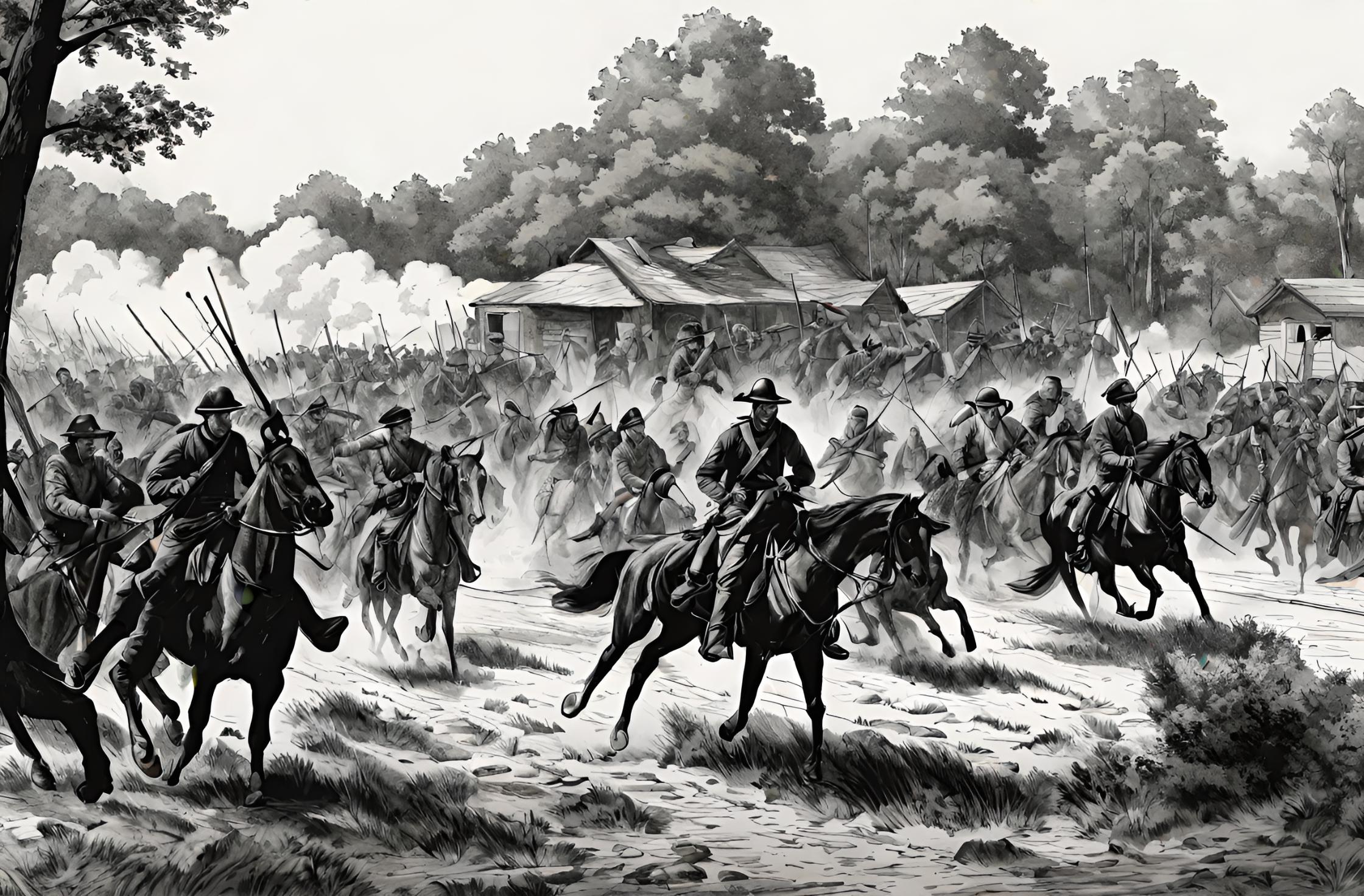Flashback to April 26
American History

Immerse yourself in the riveting story of an infamous character from the American Old West. Unearth the captivating history surrounding “Black Bart the Po-8”, a notorious outlaw who bedeviled stagecoaches until a startling misstep on November 3, 1883, led to his capture.
In the heart of the American Old West, an audacious outlaw named “Black Bart the Po-8” made headlines for his brazen stagecoach robberies. Not just a bandit with a menacing moniker, Black Bart was a master of mystique, ensuring his notoriety far exceeded that of many other lawbreakers of the time. His unique blend of courage, cunning, and charisma was enough to capture the public’s attention, but it was his final act that sealed his legendary status.
On November 3, 1883, Black Bart commenced what would be his last stagecoach heist. His approach was as audacious as it was intelligent. Utilizing his unique modus operandi, he strategically halted a stagecoach under the guise of being a lone cowboy. Disguising his true identity with a flour sack, Black Bart faced his victims with a shotguns’ muzzle, but the weapon was always unloaded. He did not believe in violence or harming his victims, but he didn’t hesitate to use fear to get what he desired. However, even the most meticulously executed plans can falter, and that’s precisely what happened here.
This fateful day, Black Bart targeted a Wells Fargo stagecoach – a company he had previously hit on more than two dozen occasions. However, the outcome of this robbery would take a different turn. Much like his previous exploits, Black Bart halted the Wells Fargo coach, threatened the passengers, and quickly made away with the loot. His departure from the crime scene was stealthy and swift, but not flawless. The notorious outlaw unknowingly dropped a bundle at the scene: a handkerchief bearing the mark of a laundry service. It was an incriminating clue that would spell the end of Black Bart’s reign of terror.
Authorities discovered the piece of fabric, and it didn’t take long for them to trace it back to a laundry service in San Francisco. With meticulous investigation and judicious use of deductive reasoning, they were able to single out the owner of the incriminating evidence. Charles E. Bolton, alias Charles E. Boles – the man behind the notorious “Black Bart the Po-8” – was apprehended.
The surprising turn of events sent shockwaves across the nation. The audacious outlaw who had outwitted law enforcement for so many years was finally in custody, all thanks to an overlooked clue. The sheer irony of Black Bart’s downfall fascinated the public, who were all drawn even deeper into the saga of the notorious robber.
Black Bart was convicted and sentenced to San Quentin Prison, serving just four of his six-year sentence before being released for good behavior. His capture marked an end to an era of stagecoach robberies, his downfall etched in American history as a testament to the adage that pride comes before a fall.
In retrospect, the intriguing saga of Black Bart the Po-8 not only reflects the lawlessness and adventure of the American Old West but also teaches us how attention to small details can be a game-changer. It underpins critical principles we can apply even today: effective investigation techniques, the importance of keen observation, and the power of critical thinking.
While the American Old West has long since faded into the annals of history, stories such as these continue to stimulate our collective imagination. The saga of Black Bart the Po-8 acts as a reminder of a time filled with outlaws and lawmen, with both sides of the scale playing a unique role in shaping America’s vibrant history. Next time you think of the Old West, remember not just the broad strokes, but also the unique, captivating tales like the suspenseful final act of Black Bart’s stagecoach robberies.
We strive for accuracy. If you see something that doesn't look right, click here to contact us!
Sponsored Content

Battle of Durham Station,…
On April 26, 1865,…

Dow Jones Industrial Average…
On April 26, 1983,…

John Norrie McArthur, malariologist/microscopist,…
On April 26, 1996,…

Odd Fellows Lodge is…
Established on April 26,…

